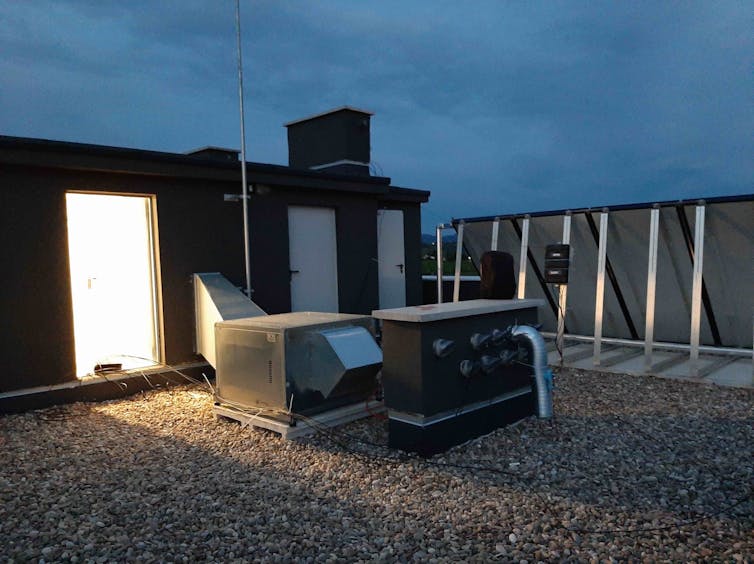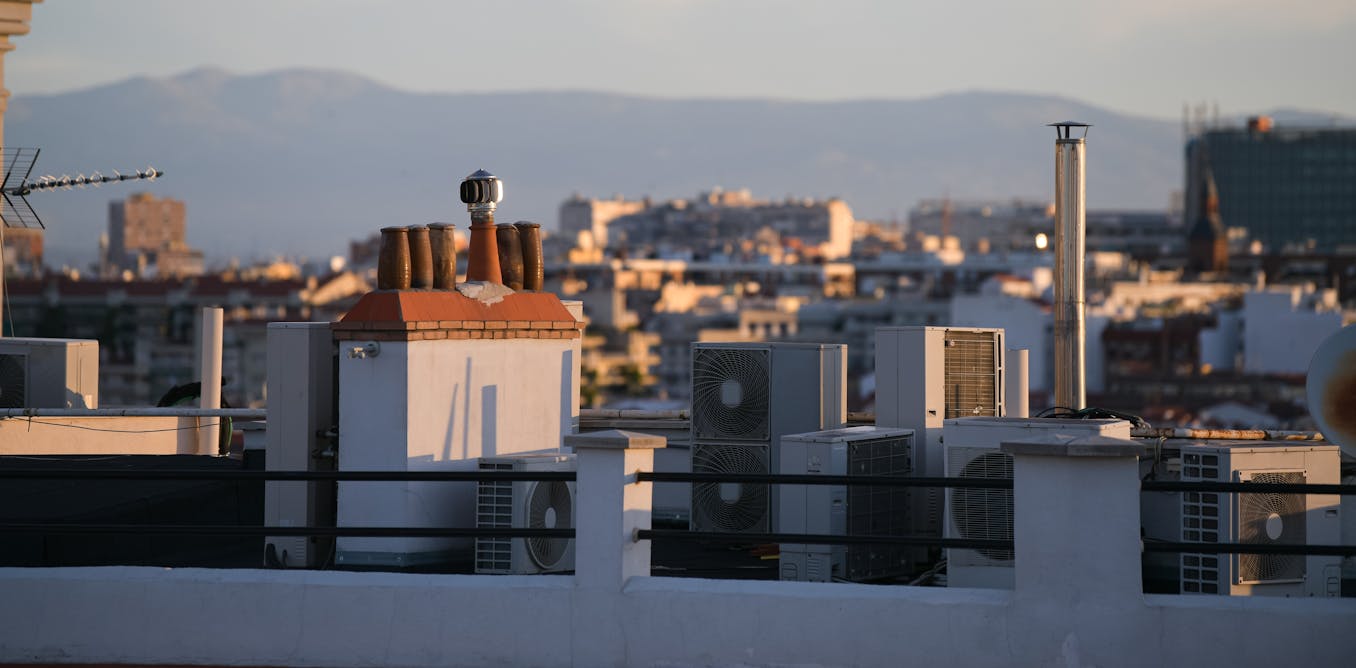According to the World Health Organization (WHO), air pollution is one of the greatest environmental health challenges that we face today. Various studies have shown that, as well as the lungs, it affects essential organs like the heart and brain, and that those who suffer most from its consequences are the most exposed or vulnerable people in society. It is a pervasive issue that affects all of humanity, and reinforces entrenched inequalities.
While vehicles and industry pollute the air outside, indoors we are exposed to a range of chemical pollutants that, even in moderate amounts, can cause headaches, dizziness, fatigue and nausea. In the long term they can lead to more serious health problems.
César Martín Gómez, CC BY-SA
One of the key factors behind the deterioration of interior air quality is that new buildings are becoming more airtight in order to improve energy efficiency. In buildings with very well insulated façades, mechanical ventilation systems have to play a bigger role than more traditional ventilation methods like windows and drafts.
Read more:
Air pollution may be making us less intelligent
In hermetically sealed buildings, less fresh air gets in. This means indoor air is replenished less often and pollutants from internal sources – or those that come in from outside – become more concentrated.
Eventually, this polluted indoor air – which is making more than a third of the planet sick – is expelled into the surrounding environment. This raises the question of how buildings pollute the air around them, what pollutants they produce, and whether this expelled air is sufficiently diluted once outdoors.
In densely populated cities, we also have to consider the vicious cycle of ventilation systems reintroducing pollutants back into buildings, not unlike the way plastic waste is dumped into the ocean and then enters the food chain, eventually ending up in people’s bodies.

Arturo H. Ariño, CC BY-SA
Volatile organic compounds, particulate matter, and methane
One source of indoor pollution is cleaning products, many of which release volatile organic compounds. The levels of these compounds expelled through ventilation systems rise and fall over the course of a normal day.
Another is particulate matter, which mainly comes from kitchens.
These two groups of pollutants – along with methane, a potent greenhouse gas made by decomposing organic matter – appear to be the main contributions that buildings make to urban air quality.
Other pollutants have less clear sources, and are less regular over time. Carbon monoxide, for instance, may come from tobacco smoke or other forms of combustion, as its main source – traffic – would not be found inside a dwelling. However, its presence in the air expelled from smoke-free homes would be a clear indicator of outdoor pollution entering the building and becoming concentrated in its ventilation system.
Pollution sensors
Monitoring and controlling the ventilation of buildings and dwellings is critical to ensuring the best possible indoor air quality. In particular, this means ventilation needs to be adjusted in relation to outdoor air conditions – increasing or decreasing the amount of outside air taken into a building depending on the difference in pollutant concentration between indoors and outdoors.

César Martín Gómez, CC BY-SA
But perhaps the next revolution in building could come from low-cost, integrated sensors: a natural evolution of the systems already used in garages and boiler rooms for carbon monoxide detection, but extended to all homes.
Indeed, the WHO highlighted this issue in a 2016 statistical report entitled Monitoring Health for the Sustainable Development Goals, which set a target for 2030 of reducing the mortality rate attributed to household and ambient air pollution. It notes that one of the main barriers to reducing mortality levels caused by air pollution is the “lack of monitoring of air pollution levels, sources and consequences on public health”.
A detailed understanding of how buildings contribute to pollution in cities is essential. This will give public authorities, decision-makers and managers the tools to establish strategies to, for example, minimise pollution through devices similar to the catalytic converters required on all combustion-powered vehicles. Eventually, we may even be able to recover useful components of domestic air, such as waste methane, which could be redirected to energy generation.



